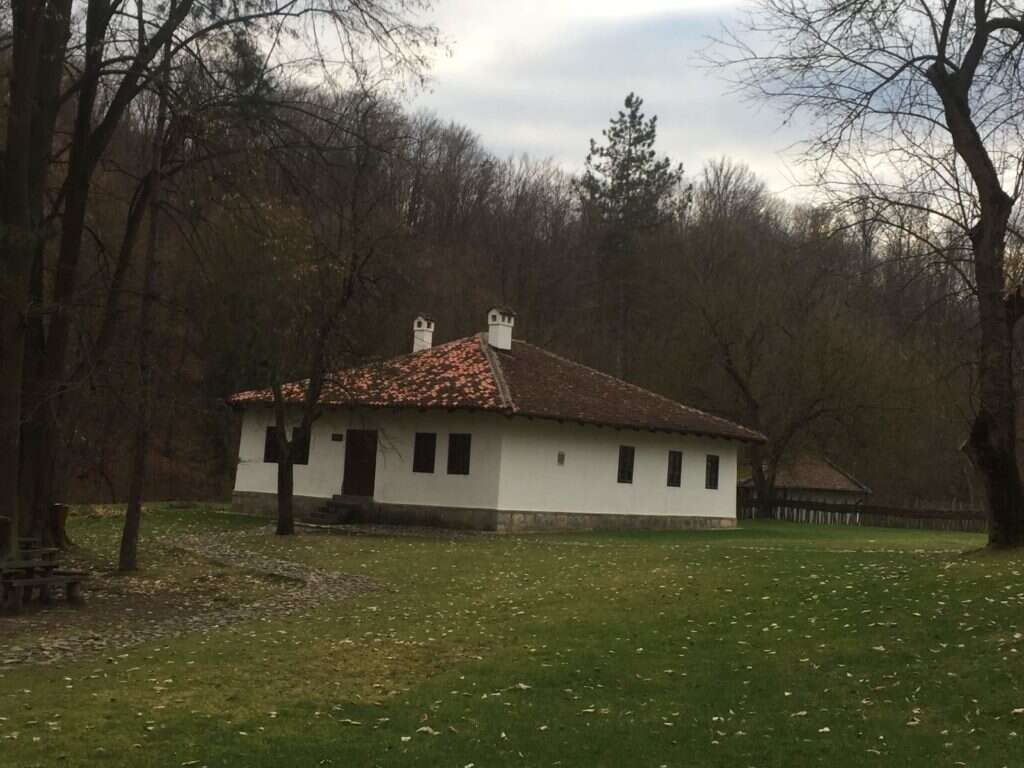Brankovina, a village near Valjevo in Western Serbia, has fewer than 500 inhabitants today. And by importance for the history of Serbia, it is side by side with big cities, such as Belgrade, Nis or Novi Sad.

Here, in the middle of the beautiful forests, lies the Historic Place of Brankovina, a complex of houses where memories of the family Nenadovic, a very significant people from Serbian history, are kept, as well as Desanka Maksimovic, the greatest poet in Serbia’s history.
There is the Church of the Holy Archangels, built by Prota Mateja Nenadovic, one of the leaders of the First Serbian Uprising against the Turks.
Next to it there are tombstones from the 19th century, belonging to members of the Nenadović family.

Near the church there are also “sobrashice”, buildings that were built in the 19th century, and served to gather people at the time of church holidays. These simple houses are an excellent preserved example of construction in Serbia in this period.
In the second part of this complex there is The Nenadović Vayat, in which in 1826, in this famous family, the great Serbian writer Ljuba Nenadović was born. Right next to it is the first state school – built in 1836 in Brankovina.

The new school building was built in 1894, and in there first letters were taught by the great poet Desanka Maksimovic, the biggest one Serbia has given to poetry and the world.
Not far from the church is the tomb of Desanka Maksimovic.
Near from the village, there is also the Monument at Brankovina Vis, about 5 meters high, marking the place from which on 28 February 1804 the rebels set off to fight for the liberation of Serbia from the Turkish authorities.

Mateja and Jakov Nenadovic were at the forefront of this uprising. Mateja was a duke, a diplomat, a writer of the first sonstitution and the first president of the Serbian government. His father, Aleksa Nenadovic, was among the most educated and most respected people in Serbia at that time, and historians believe that he would be at the head of the First uprising, not Karadjordje Petrovic, had the Turks did not kill him.
The brother of Aleksa Nenadović, Jakov, was the commander of Western Serbia, and next in line of command after Karadjordje. He was the first Minister of the Interior. Aleksa’s son, Sima Nenadovic, was the hero of the Second Serbian Uprising, as well as his cousin Jevrem Nenadovic.

All of them, the most important figures in Serbian history during the liberation, came from small Brankovina.
Desanka, daughter of Brankovina, wrote about her homeland the words that best explain the essence of this place:

- A poet and homeland? What is the homeland of the poets? Is it a vineyard, somewhere in Brankovina, in which a girl “has overcome her fear”, listening to the night storms of slavuja and gurls, cowards and owls, feeling the first poetic calls in her? Or is it the first sunset in a pupil’s book entered? Or the first book read in a sunny classroom school that smells of apples and bread from a schoolbag? Or the moment when it was realized that a lot of things in life are not exactly the same as in the imagination of children, but there are other, bigger and harder dimensions and meanings? The homeland is all patriarchalism of the poet, people, language, curses, sounds and images. The homeland is a embrace that exhales, extends, rests. The homeland is also a shocking ballad of the peasant’s death.
This article is a part of the project “Seven miracles of Valjevo”, supported by the City of Valjevo. Positions of the supported media project do not necessarily reflect statements of the organ supporting the project.
(Come to Serbia)
